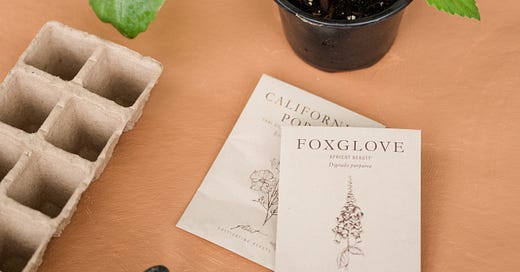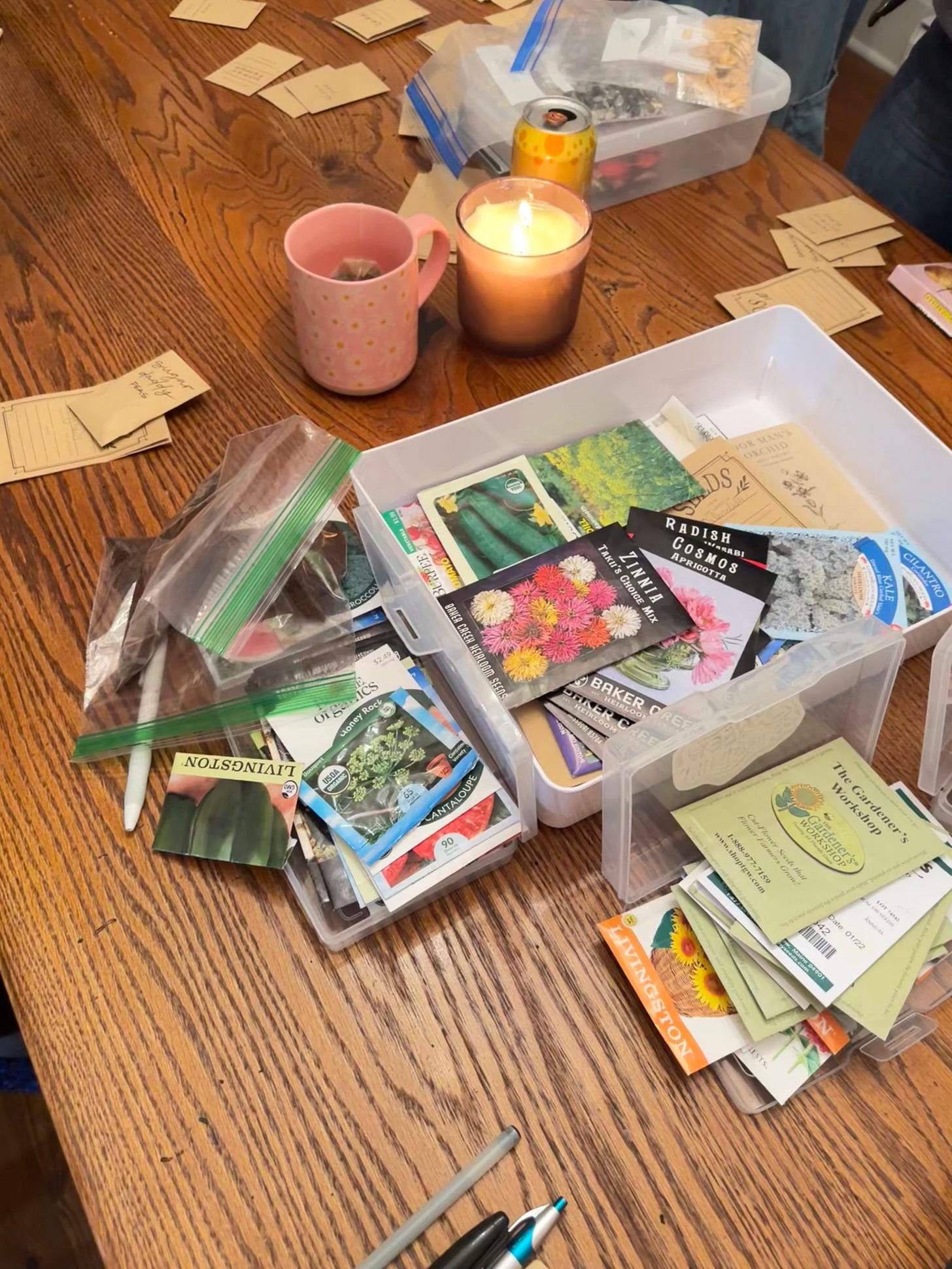Photo by Rachael Leigh Photos
One of my favorite things about gardening is how willing other people are to talk about their gardens. I’ve had lengthy conversations at the park while my kids played because I was reading a gardening book, I’ve DMed other flower growers on Instagram and became real life friends with them, in the summer I routinely receive pictures from other people’s gardens because they know I’ll be as excited as them to see it, and I’ve can make quick friends with almost anyone by turning the conversation from the weather to how that weather has affected our plants. My husband calls me a “garden extrovert”, which is the exact opposite of how I am in any other situation. I don’t think I am the only one who will talk ad nauseum about gardening but quickly becomes nauseous in any other social situation, which is why I gathered my friends who garden, for the second year in a row, to host a seed swap. Most of the friends I invited had not met each other, but they all said yes.
What is a Seed Swap?
A seed swap is a gathering in which gardeners share and exchange seed, either purchased seed that they’ve never used or seed they have saved from their own garden. Most seed packets come with too many seeds for the home gardener to use in their own growing space. Gardeners, including myself, are sometimes seed-hoarders too, always ordering more than we could possibly ever grow. My friends and I save some of our own seeds as well, which, again, provides too many seeds than we can use the following year. A seed swap is great way to share the abundance, foster community and share knowledge and experience. Unlike other hobbies or skills, learning from other people that are local to your area really matters. There’s a bounty of gardening information to be found and researched, but the information isn’t relevant unless it’s coming from a gardener in your same growing zone or that lives in a similar climate. A seed swap shrinks that area even further by offering extremely useful information from people just down the road from you. Plus, seeds saved from your local area are better adapted to grow in your garden, even more than the same seed purchased from another seed source. The plant has already grown in your area, so the next generation is even more capable of thriving in the same area.
I Digress…
At the gathering, we exchanged both entire packets of seeds that had not been opened and seeds we had saved from our gardens. I put a container in the middle of the table for the unopened seed packets that were up for grabs. I provided plain, empty seed packets for any seed that needed to be divided or dispersed. After we ate and had a great discussion, the kind that only excites those invested in the same niche topic, we swapped seeds. As we did, those who gave seeds shared growing tips, we asked questions, and influenced each other to grow more than ever in our gardens this year.
Gardening can be really lonely and overwhelming. It’s hard work, not always successful, and there is more information available than you could ever need. It’s easy to feel like you’re not doing it “right,” whatever that means. Because it’s all-consuming, though, I’ve found that gardeners want to talk about it when given the opportunity. I sure do! I have heard from almost everyone that attended about how much fun they had. Though that was the first time most of the women had met each other, they each have told me that they really hit it off with someone else. A couple friends have even asked to get together again, and throughout the gardening season, to swap houseplants, seedlings, or plants. I think we will.
A Couple Tips
As I mentioned, I’ve only hosted two seed swaps. However, I do have some tips to share in case you’d like to host one of your own.
Host a seed swap early in the year. I hosted this year’s seed swap on Saturday, January 25. A couple days before, I was reading a seed book. It mentioned the last Saturday in January is National Seed Swap Day, which this year was January 25. What a fun surprise that I planned a seed swap on National Seed Swap Day! I also personally like this timing. In my zone 6b growing zone, the earliest any plants need to be started from seed is February. Acquiring seed that I’d like to grow this year in January gives plenty of time to make sure I know the requirements for growing it and time to order any seed that I do need to purchase.
Don’t make a final draft of your garden plan until after the seed swap. I made this mistake last year. I had already planned my garden and really needed to shift things around in order to fit the seeds/plants I got from the seed swap. This year, I had only a rough outline, with no beds completely planned, before the swap. Now I have room to easily fit the new seeds in the plan.
Don’t purchase seeds until after the seed swap. I think I made this mistake last year too. You don’t want to buy seed that you could get for free at the swap. I usually order quite a bit of seed, maybe 15-25 packets a year. Because I waited to make my purchased after the swap, I only needed to order two packets of seed.
I really hope you consider gathering your gardener friends to share seeds, experience and growing tips. You might even find yourself in the middle of a worm compost demonstration, like I did… Gardening is a slippery slope, but like any slipper slope, you might as well drag friends down with you.
The only photo I took of the evening…. I call it a win though because it means I was really enjoying myself.







What a good idea! I just went to my first seed swap this week and couldn't believe how many people were there talking about gardening.